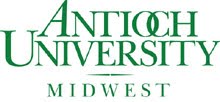Craig Walter, Fairborn Assoc. of Bowhunters, spoke next. The Fairborn Parks are considering bow hunting as the most humane way to reduce the herd numbers. A survey of deer in their three largest parks was 75 deer per square mile – 55 over the ideal number for a healthy population.
Knowing that many citizens don’t like the hunting option, he pointed out that in order to have forests in the future, the herd size must be reduced. Community Park in Fairborn lost a 120 year-old trillium bed to deer foraging and Virginia bluebells are becoming scarce. Because of heavy feeding, the deer determine which plants grow in a forest. They don’t eat honeysuckle and garlic mustard but do enjoy the tasty native plants that support a wide variety of insects, animals, and birds. The new tree shoots are also preferred food, and those that deer don’t eat are rubbed when they get taller and don’t survive. He noted that few new trees are growing in our woods. He also showed pictures of forest growth inside deer exclusion fences as opposed to growth outside. There was a total change in under-story height and number of plant species. I hadn’t seen these pictures before and the contrast was astounding.
Craig explained his program. The bowhunters would donate the meat to a licensed food processor and then distribute it to participating food pantries. Also to qualify for hunting in the parks, bowhunters must adhere to rigorous standards and training by the Division of Wildlife. They must live in the community, pass tests that include safety standards, and have liability insurance. During the hunting season, they use tree stands so that they are aiming down, and not out where they might hit something else. Their arrows are marked with the archer’s name and are numbered. To renew their license, they must show their numbered arrows at the end of each season – obviously they don’t lose arrows. He explained that an arrow puts a deer down in 5 seconds. Bowhunters also police themselves and report other hunters who are not obeying the laws or are acting unethically.
His final words were about the health of deer. He showed us two skeleton heads – one a healthy deer, and one from an over-populated area – and the difference was significant. He said that when populations are too large, he sees many deformed and under-sized deer.
After this presentation, I felt much more comfortable about bowhunting as a reasonable way to reduce deer population especially when it would restore Ohio woodlands.
Macy Reynolds, Greene County Master Gardener
Sunday, November 8, 2009
Subscribe to:
Post Comments (Atom)








1 comment:
Thanks for the good series of articles about the deer herd. They have destroyed my favorite trees this year. Seems like nobody cares.
Post a Comment